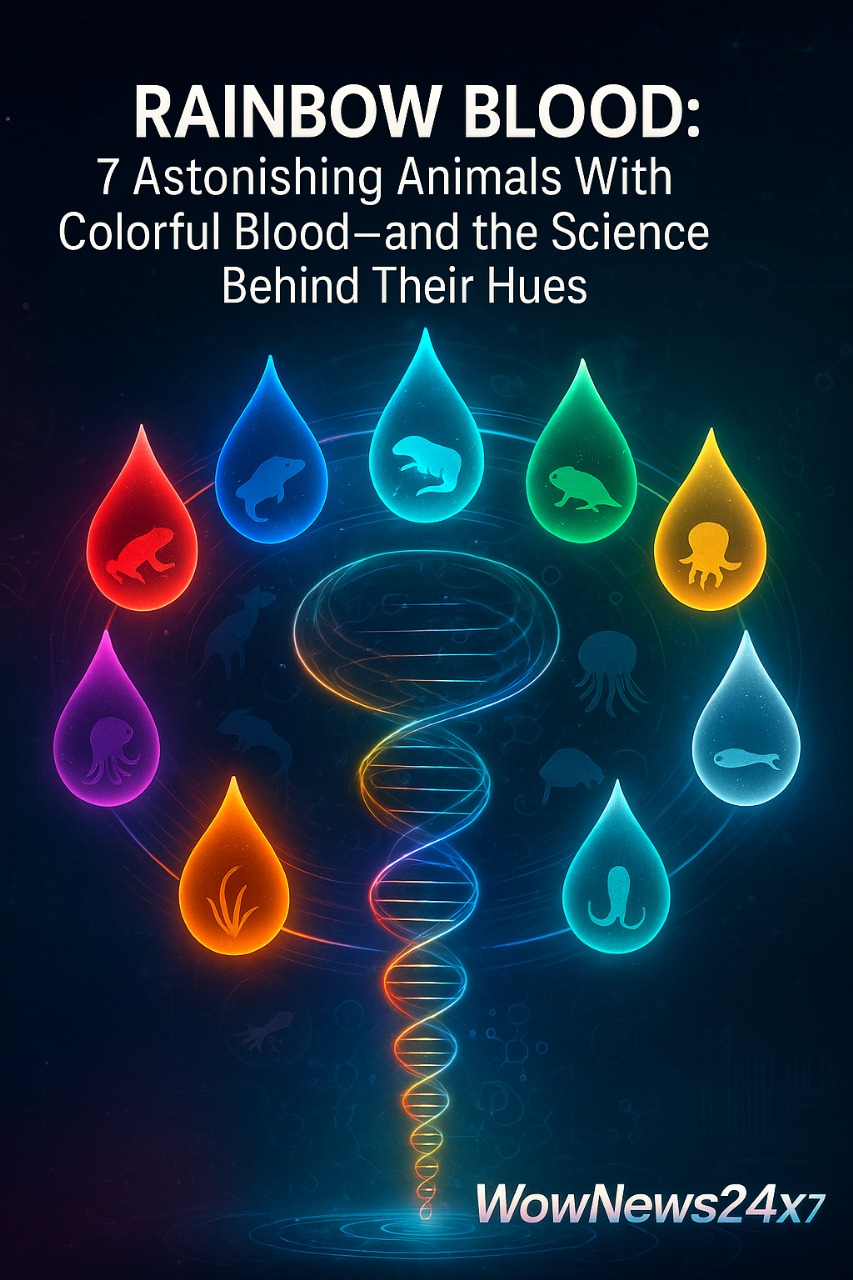
Follow WOWNEWS 24x7 on:
Updated: June 19, 2025 20:29

The Hidden World of Colorful Blood
While most creatures bleed red, nature’s palette is far more vibrant than you might think. Here are seven lesser-known animals whose blood defies expectations—turning blue, green, yellow, or even purple. Discover what makes their blood so unique and why evolution painted them this way.
1. Octopus: The Blue-Blooded Genius
Octopuses have blue blood, thanks to a copper-based molecule called hemocyanin. This adaptation helps them survive in cold, low-oxygen ocean depths by efficiently transporting oxygen through their bodies. Their three hearts work overtime to pump this blue blood, giving them an edge in the harshest marine environments.
2. Icefish: The Transparent-Blooded Oddity
Icefish, found in Antarctic waters, are the only known vertebrates with colorless—or nearly transparent—blood. Lacking hemoglobin, their blood appears almost clear, allowing them to thrive in frigid, oxygen-rich waters where most fish would perish.
3. Peanut Worm: The Purple-Blooded Burrower
Peanut worms (Sipunculids) boast purple blood, colored by hemerythrin—a rare oxygen-carrying protein. This pigment turns violet-pink when oxygenated, helping these marine worms survive in the low-oxygen mud and sand of ocean floors.
4. Leeches: The Green-Blooded Suckers
Some leech species possess greenish blood due to the presence of chlorocruorin, an iron-based pigment similar to hemoglobin. This pigment gives their blood a green tint and is especially efficient at binding oxygen in aquatic environments.
5. Sea Cucumbers: The Yellow-Blooded Marvels
Sea cucumbers have yellow blood, colored by vanabin, a vanadium-based pigment. This unique adaptation may help them detoxify metals in their sediment-rich habitats, though scientists are still unraveling all the benefits of this golden blood.
6. Spiders: The Blue-Blooded Webmasters
Spiders’ blood (hemolymph) is blue, again because of hemocyanin. Unlike vertebrates, spiders have open circulatory systems, and their blue blood helps transport oxygen efficiently throughout their bodies—even as they spin their intricate webs.
7. Green-Blooded Skinks: Nature’s Emerald Lizards
The Prasinohaema skinks of New Guinea are true outliers, with blood, bones, and tissues that are bright green due to sky-high levels of biliverdin, a bile pigment. While toxic to most animals, these skinks thrive with green blood, possibly gaining protection against malaria and other parasites.
Key Highlights
Colorful blood is often the result of alternative oxygen-carrying molecules: Hemocyanin (blue), hemerythrin (purple), chlorocruorin (green), vanabin (yellow), and high biliverdin (green).
Adaptations are linked to extreme environments: From the icy Antarctic to tropical jungles, these pigments help animals survive low oxygen, toxic metals, or parasite threats.
Biomedical curiosity: Studying these animals could unlock new treatments for diseases like jaundice or malaria, and inspire medical innovations.
Sources: Times of India, National Geographic, Smithsonian Magazine




